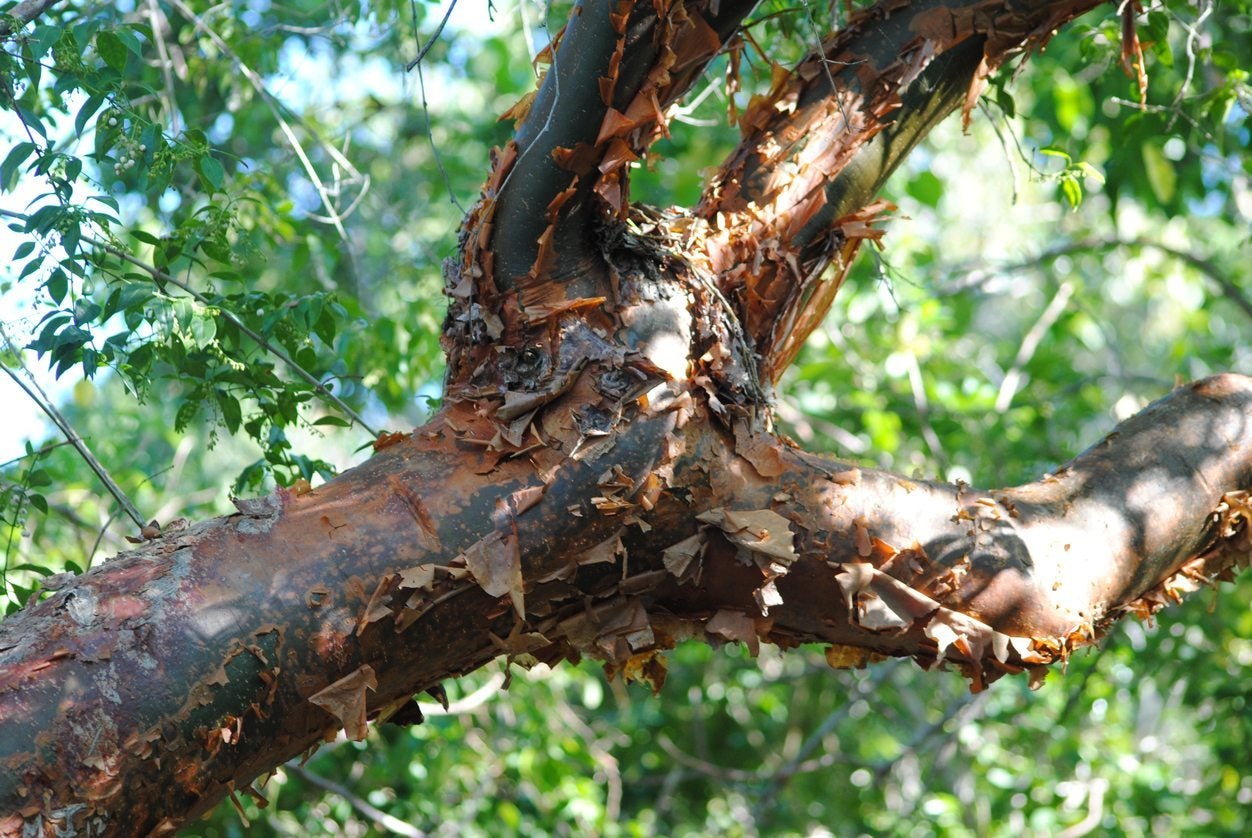Gumbo Limbo Info – How To Grow Gumbo Limbo Trees


Gumbo limbo trees are big, very fast growing, and interestingly shaped natives of southern Florida. These trees are popular in hot climates as specimen trees, and especially for lining streets and sidewalks in urban settings. Keep reading to learn more gumbo limbo info, including gumbo limbo care and how to grow gumbo limbo trees.
Gumbo Limbo Info
What is a gumbo limbo tree? Gumbo limbo (Bursera simaruba) is an especially popular species of the genus Bursera. The tree is native to southern Florida and ranges throughout the Caribbean and South and Central America. It grows extremely fast-- in the course of 18 months, it can go from a seed to a tree reaching 6 to 8 feet in height (2 m.). Trees tend to reach 25 to 50 feet (8-15 m.) tall at maturity, and they are sometimes wider than they are tall. The trunk tends to split into several branches close to the ground. The branches grow in a curved, contorted pattern that gives the tree an open and interesting shape. The bark is brownish gray and peels to reveal attractive and distinctive red underneath. In fact, it is this peeling back that has earned it the nickname of “tourist tree” for the resemblance to sunburned skin that tourists often get when visiting this area. The tree is technically deciduous, but in Florida, it loses its green, oblong leaves at almost the same time it grows new ones, so it is practically never bare. In the tropics, it loses its leaves completely during the dry season.
Gumbo Limbo Care
Gumbo limbo trees are tough and low maintenance. They are drought-tolerant and stand up well to salt. The smaller branches may be lost to high winds, but the trunks will survive and regrow after hurricanes. They are hardy in USDA zones 10b through 11. If left unpruned, the lowest branches may droop nearly down to the ground. Gumbo limbo trees are a good choice for urban settings along roadways, but they do have a tendency to get big (especially in breadth). They are also excellent specimen trees.
Gardening tips, videos, info and more delivered right to your inbox!
Sign up for the Gardening Know How newsletter today and receive a free copy of our e-book "How to Grow Delicious Tomatoes".

The only child of a horticulturist and an English teacher, Liz Baessler was destined to become a gardening editor. She has been with Gardening Know how since 2015, and a Senior Editor since 2020. She holds a BA in English from Brandeis University and an MA in English from the University of Geneva, Switzerland. After years of gardening in containers and community garden plots, she finally has a backyard of her own, which she is systematically filling with vegetables and flowers.
-
 Looking For Plants To Give You The Soft And Fuzzies? Try These 5 Fuzzy Leaf Plant Options
Looking For Plants To Give You The Soft And Fuzzies? Try These 5 Fuzzy Leaf Plant OptionsLovers of texture, drama, silver foliage and tactile plants will adore these special sensory garden additions. These fuzzy leaf plant options will leave you all aglow
By Susan Albert
-
 Get Ready For A Summer Of Hummers! Grow These Full Sun Hummingbird Plants and Flowers
Get Ready For A Summer Of Hummers! Grow These Full Sun Hummingbird Plants and FlowersIf you’re lucky enough to enjoy a sunny backyard, make sure you are maxing out on your pollinator opportunities and grow these full sun hummingbird plants and flowers
By Tonya Barnett